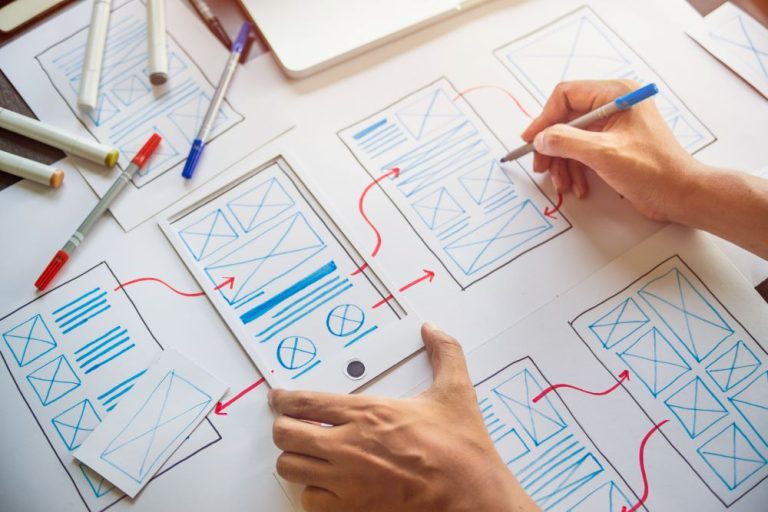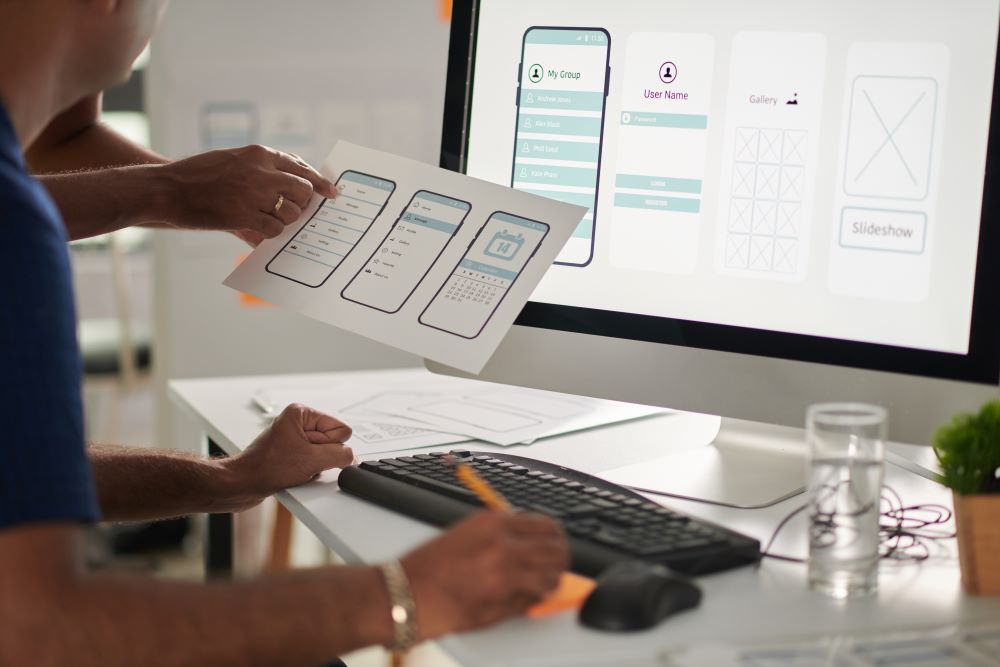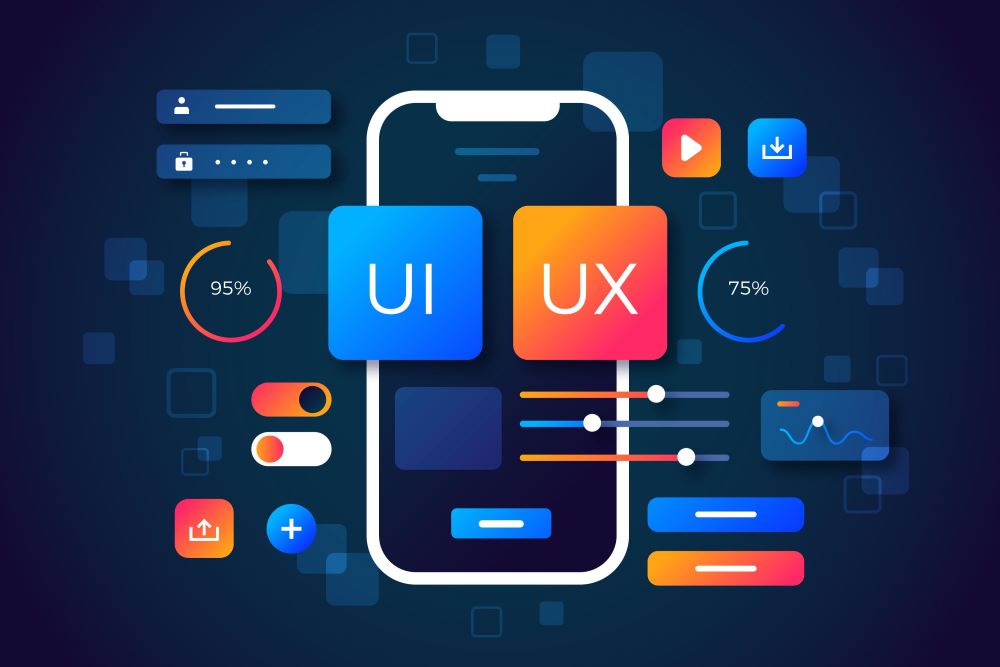What is user experience (UX) and why is it important?
Designing and optimising the user experience is essential in product development, as a good UX helps users to use a product or service more easily and efficiently. This can improve user satisfaction, increase loyalty and reduce attrition. What is UX and how is it different from UI? Why is user experience design important in product development projects? In our article, we will now walk you through the importance of a great user experience.

A user experience report
User experience (UX) refers to the feelings and experiences you have with a product.
It includes the whole process of product acquisition and integration, including aspects of branding, design, usability and functionality.
The number one requirement for an exemplary user experience is to meet the exact needs of the customer. Then comes simplicity and elegance, resulting in products that are a pleasure to buy and a pleasure to use.
The real user experience goes far beyond getting the promised features. A good UX is the result of a seamless integration of tasks from many areas, including programming, marketing, graphics and user interface design.
How can user experience (UX) help?
Take an e-commerce website for example! If a customer finds the process and interface long, complex and complicated, they may be reluctant to return because of the poor UX. On the other hand, if he can make a purchase quickly and without hassle, this will encourage him to choose the products of the website where he experienced a pleasant user experience.
UX is increasingly important. The better the experience, the more likely visitors are to choose our products over the competition. So user experience can be a key differentiator in a crowded market.

What is the difference between UX and UI?
The term UX is also often used in connection with UI, often interchangeably.
What exactly is the UI?
While the UX is the user experience, the UI, or user interface, is the user interface. That is, the interface through which the user interacts.
Similar to the cockpit of an aeroplane or the buttons on a remote control. This is what the user sees, touches, presses. It is also referred to as the appearance of the product.
Examples include:
- the buttons
- the layout
- the navigation
- the form fields, etc.
UX vs UI
It is important to distinguish between the overall user experience (UX) and the user interface (UI), even if the UI is obviously an integral part of the design. The term user experience covers a much broader concept.
For example, consider a film website. Even if the user interface for searching for films is perfect, the user experience is bound to be poor for those who want information about a less famous art film if the underlying database only contains hits from the big studios.
NOT TO KNOW: It's also useful to be aware of the difference between UX and usability, which is a qualitative characteristic of the user interface. It includes making the system easy to learn, efficient to use, a pleasant experience, etc. But this is only one part of the user experience.

What should be the criteria for user experience design?
User experience is all about making the entire customer journey pleasant and productive. But how does this happen?
#1 Highlighting the values of the product
First of all, it is very important to emphasise to users the features and benefits that the product will bring to the lives of both existing and potential users. So you need to create a value proposition that is desirable to the target market.
The aim of UX is therefore to make this value discoverable and easily accessible. But how?
- clear wording, easy to understand information
- with appropriate visualisation
#2 Encouraging engagement
Once we have made the values visible, it is important to encourage users to use it, we want them to be engaged. We can do this with clear navigation.
#3 Fine tuning
Next comes the refinement of customer interactions. To be effective, it is necessary to remove potential friction points and minimise the number of steps required to perform different tasks, i.e. to simplify processes.
As the product matures, UX can go beyond the boundaries of the product by assisting with related tasks that directly affect the value and satisfaction of the actual product experience.
In all cases, the goals can be achieved through a better understanding of real user needs. This requires consistent questioning of internal assumptions about what customers want to do and how they use the product. As opposed to what product and UX teams think customers want and do. Confirming assumptions and theories - or discovering their flaws - requires further development.
What is the job of a UX designer?
The UX designer is primarily responsible for user research and testing, and also includes graphic design.
Its tasks include:
- conducting customer interviews to understand the customer experience (or participating in them to get a clearer picture of what users really want and what is important to them)
- minor coding (usually in HTML/CSS)
- making wireframes, templates
- logo and button design
- writing product texts
- Conducting UX usability tests, etc.
Why is user experience design important in product development projects?
In fact, UX design and product management are two sides of the same coin:
- the UX of the user page
- product management on the business side
However, unlike the coin, these two areas have a lot of overlap.
Product managers basically focus on the "what" part of the equation, i.e:
- What is the target market?
- What problems is the product trying to solve?
- What skills should be available to solve problems?
- What is the business model? etc.
In contrast, UX focuses on the "how" component of product development, i.e. how the user will perform their tasks.
This also makes it easier for product management, as they can spend their limited time on other things, and instead of trying to solve everything themselves, they can work with UX designers to benefit from additional perspectives and points of view.
The best links between product management and UX start with conducting user research and developing user cases together. This creates a common ground, while allowing both parties to work on their own areas of focus, and ensures that the user experience is fully driven by business goals and customer needs.
Product managers can also benefit from increasing their UX experience and integrating design into their overall approach. This will ensure that the strategy and vision they set out takes full account of the user experience, which is crucial to the ultimate success or failure of the product.
UX designers also define the "visual grammar" of the product, or create or select icons and typography that communicate the brand and give users visual cues that they will come to know over time. They also ensure that the language used on the site is relevant and clear to the audience, while remaining consistent and familiar throughout the customer journey.
Want to succeed in an agile environment? Develop your practical tools and obtain international qualifications! Deepen your knowledge with our professional trainings!

 Designabc
Designabc